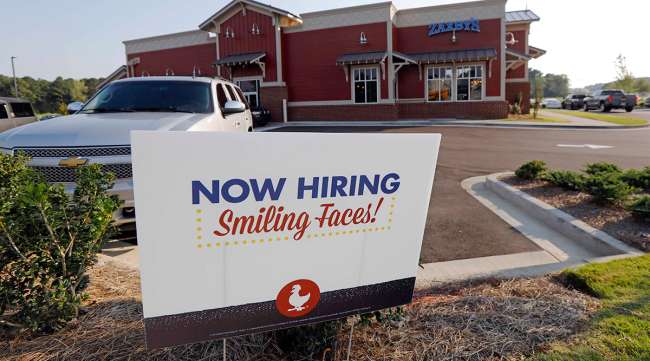October Job Openings Rise to Second Highest on Record

WASHINGTON — The number of open jobs rose in October to the second highest on record, evidence that U.S. employers remain determined to hire despite ongoing trade disputes and rocky financial markets.
The Labor Department said Dec. 10 that the number of job openings increased 1.7% to a seasonally adjusted 7.1 million. That is not far from the record of 7.3 million reached in August.
The number of people hired also climbed while the ranks of those who quit their jobs fell slightly.
The data underscore that the labor market remains strong and suggest that the Dec. 7 jobs report, which showed a modest drop in the pace of hiring, does not reflect a pessimistic outlook among employers. The economy expanded over the summer and fall at the fastest six-month pace in four years.
On Dec. 10, the government said employers added 155,000 jobs in November, down from 237,000 in the previous month and below the average monthly gain this year. The unemployment rate stayed at a nearly five-decade low of 3.7%.
The Dec. 10 report, known as the Job Openings and Labor Turnover survey, includes data on the number of jobs advertised by employers, as well as total hiring and the number of layoffs and quits. The Dec. 7 job gain is a net figure.

Luke Sharrett/Bloomberg News
Many economists saw the hiring decline in the Dec. 7 report as a potential sign that the economy and job market are decelerating from robust growth achieved earlier this year after the Trump administration’s tax cuts and increased government spending took effect.
After healthy growth in the second and third quarters, the Federal Reserve Bank of Atlanta forecasts that the economy will expand at a slower but still-solid 2.4 % pace in the final three months of the year. Growth also is likely to remain at about that level in 2019, analysts estimate.
Job openings soared 7.6% in manufacturing to 522,000, where many employers say they are unable to find qualified workers. Factory jobs increasingly require higher tech skills in areas such as robotics and computer-assisted machine tools.
Openings also jumped in construction, financial activities, and retail. They fell in mining and logging, professional and business services such as accounting, and essentially were unchanged in health care.
The number of people quitting their jobs declined slightly and is down to 3.5 million, from a peak of 3.65 million in August. Quits are generally seen as a sign of job market strength as most people quit for other jobs, typically at higher pay.
The decline in quits is a mild disappointment to some economists.
“Despite an unemployment rate at multidecade lows … quitting hasn’t further picked up,” said Nick Bunker, an economist at job search website Indeed. “Perhaps an even tighter labor market is needed to boost quitting, or a tight labor market isn’t as powerful as once thought.”




